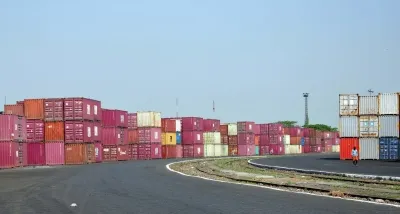Has the rejection rate of India’s goods exports really fallen by over 12 percent in June?

Synopsis
Key Takeaways
- 12.5% decline in rejection rates of Indian goods exports in June.
- Government measures have enhanced export quality.
- Continuous monitoring by agencies to ensure compliance with international standards.
- Growth in sectors like electronics and pharmaceuticals.
- Proactive steps taken to support exporters.
New Delhi, Aug 5 (NationPress) The Minister of State for Commerce and Industry, Jitin Prasada, informed Parliament on Tuesday that various measures implemented by the Centre have led to a 12.5 per cent reduction in the rejection of Indian goods by foreign markets in June of this year, when compared to the same month last year.
He elaborated that the government's initiatives, including the introduction of Quality Control Orders and the alignment of standards with international norms, have significantly improved the global competitiveness of India’s exports, resulting in the noted decline in rejection rates.
Furthermore, he acknowledged that all nations encounter challenges related to product rejections due to diverse non-tariff barriers, which encompass quality assurance, phytosanitary regulations, and packaging and labeling requirements imposed by importing countries.
Importing nations frequently update regulations concerning residue limits for various goods, particularly from a food safety and health standpoint. The minister stated that exporters are kept informed of such regulations to facilitate seamless exports from India.
Relevant agencies, including the Export Inspection Council, the Agricultural & Processed Food Products Export Development Authority (APEDA), the Marine Products Export Development Authority (MPEDA), various Commodity Boards, and Export Promotion Councils (EPCs), continuously monitor rejection instances and implement suitable corrective and preventive measures. These initiatives feature capacity building for exporters, stringent pre-export checks, enhanced laboratory testing, and stakeholder awareness programs to ensure compliance with the standards of importing nations and to minimize future occurrences, he added.
In parallel, India's merchandise exports for June 2025 were evaluated at $35.14 billion in contrast to $35.16 billion in June 2024, based on the latest figures from the Ministry of Commerce and Industry.
Key contributors to the growth in merchandise exports for June include electronic goods, drugs & pharmaceuticals, engineering goods, marine products, and meat, dairy & poultry products.
Exports of electronic goods surged by 46.93 per cent, escalating from $2.82 billion in June last year to $4.15 billion in June 2025.
Exports of drugs & pharmaceuticals rose by 5.95 per cent, climbing from $2.47 billion to $2.62 billion during the month, while engineering goods exports experienced a 1.35 per cent increase, rising from $9.38 billion in June last year to $9.50 billion in June this year.









